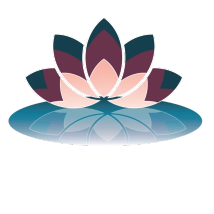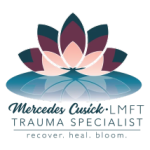Introduction to EMDR Intensives: A New Hope for Healing
EMDR Intensives might sound like something out of a sci-fi movie, but they’re very much real and powerful in healing emotional pain. EMDR stands for Eye Movement Desensitization and Reprocessing. In simpler terms, it’s a therapy that helps people deal with tough memories without getting stuck in them. Unlike regular therapy sessions that spread over months or years, EMDR intensives pack the healing punch in just a few days. Think of it as a fast-forward button for your healing journey. This approach is great because it’s intense and focused, giving people hope and help faster than they might expect. With EMDR intensives, you dig deep, face those haunting memories, and find a new way to look at them, all with professional help by your side. It’s like cleaning out a wound properly so it can finally heal. If you’ve been carrying around emotional scars, EMDR intensives could be the game-changer you’ve been looking for.
Understanding Emotional Scars and Their Impact
Emotional scars come from rough experiences in life—things like trauma, big or small, that stick around in your mind, affecting how you feel, think, and act, even years after they happen. You don’t see them like you do a cut or bruise on your skin, but they’re real, and they can hurt a lot inside. Sometimes, they make day-to-day life harder, messing with your moods, how you deal with other people, and how you see yourself. The deal with these scars is they don’t just fade away on their own over time like a physical scar might. They need attention and care to heal properly. Ignoring them or just hoping they’ll go away can make things worse, letting them dig in deeper, which affects your mental health and well-being. Understanding the impact of these emotional scars is the first big step in tackling them, showing why methods like EMDR (Eye Movement Desensitization and Reprocessing) are game changers in healing. By acknowledging the weight of these scars, you start on the path to healing, opening up possibilities for a lighter, more joy-filled life.
What are EMDR Intensives? Exploring the Basics
EMDR Intensives are a deep dive into healing, designed to fast-track your journey to mental wellness. EMDR stands for Eye Movement Desensitization and Reprocessing, a proven method that helps people overcome trauma and emotional distress. Unlike traditional therapy sessions that spread out over months or years, EMDR Intensives are concentrated, meaning you get extended, focused sessions over a few days or weeks. This approach allows you to dig deep into your issues and start seeing changes much quicker. It’s like giving your brain a reboot, specifically targeting those emotional scars and working towards healing them at a much faster pace. So, if you’re feeling stuck or weighed down by past trauma, EMDR Intensives could be the game changer you’re looking for.
The Science Behind EMDR: How It Works to Heal
EMDR, short for Eye Movement Desensitization and Reprocessing, is more than just a long name. It’s a powerful therapy tool that directly targets the way memories, especially traumatic ones, are stored in the brain. When you experience something traumatic, your brain freezes that memory, emotions, and all, like a snapshot. Later, this frozen memory can cause a lot of emotional pain. EMDR uses a specific approach to help unfreeze these memories. Here’s the simple version: during EMDR, you’ll briefly focus on the traumatic memory while also experiencing bilateral stimulation, typically through guided eye movements. This process is believed to mimic the rapid eye movement (REM) phase of sleep, which is crucial for processing and organizing memories. What EMDR does is basically poke holes in the snapshot, letting the pain leak out and allowing your brain to reprocess the memory in a healthier way. It’s like updating old, harmful software in your mind. While it might sound a bit sci-fi, there’s solid science backing it up, showing that it can significantly reduce the emotional distress linked to traumatic memories.
Benefits of Choosing EMDR Intensives for Emotional Healing
EMDR Intensives fast-track healing. Think about it like this: instead of dragging out therapy over months or years, you dive deep. This isn’t just quicker; it’s efficient. You face your traumas head-on in sessions that last hours, not the typical 50 minutes. This means getting to the root of your issues faster. But it’s not just about speed. These intensives provide a safe space for focused therapy. No weekly distractions. You’re fully immersed, which for many, strengthens the healing process. Plus, EMDR Intensives are scalable. Tailored to you. Whether it’s coping with loss, battling anxiety, or wrestling with old wounds, the approach adjusts. And don’t forget the aftercare. Post-intensive support is strong, ensuring you’re not alone in translating therapy gains into daily life. In a nutshell, picking EMDR Intensives for emotional healing packs a wallop. It’s about getting profound results, personalized therapy, and a tight support net, all aimed at helping you move past your traumas and into a more peaceful state of mind quicker than traditional methods.
Personal Stories: Transformation Through EMDR Intensives
People who have gone through EMDR Intensives share powerful stories of transformation. They talk about being held back by deep emotional scars from traumas big and small. For many, traditional therapy helped but didn’t quite reach the intensity of their pain. Dive into EMDR Intensives, and you hear about a before and an after. Before: days filled with anxiety, depression, or the echoes of traumatic events. After: a newfound sense of peace, clarity, and often, a return to joy. These stories aren’t just about overcoming. They’re about reclaiming life. Each journey is unique, but a common thread is the surprise and relief at how effective these intensives can be. It’s not an instant fix, but many say it’s the closest thing to a turning point they’ve experienced.
The EMDR Intensive Experience: What to Expect During the Sessions
When you sign up for an EMDR Intensive, get ready for a deep dive into healing. Unlike traditional therapy sessions that stretch over months, EMDR Intensives are shorter yet more focused. You’re looking at days filled with one-on-one sessions aiming to speed up your healing journey. Here’s the breakdown: EMDR stands for Eye Movement Desensitization and Reprocessing. It’s a therapy aiming to help you deal with traumatic memories without letting them rule your life. During the sessions, you will use pulsators, lightbar or headphones while you recall distressing events. It’s not about reliving trauma but reprocessing it so it doesn’t pack the same emotional punch. Intensives are half day and up to multiple days , giving you plenty of time to tap into and process those memories. The goal? To leave feeling lighter, less troubled by past events. Remember, it’s intense because it’s condensed therapy, but it’s also incredibly effective. Walk in ready to tackle your emotional baggage, and walk out feeling a significant shift. That’s the EMDR Intensive promise.
Post-EMDR Intensive: Integrating the Healing into Daily Life
After your EMDR (Eye Movement Desensitization and Reprocessing) Intensive, the real work of integrating that healing into your daily life begins. Think of it as taking the insights and emotional shifts from your sessions and weaving them into the fabric of your everyday existence. This isn’t overnight magic. It’s about practice, patience, and persistence. Start by recognizing and celebrating small victories. Did you handle a situation with less anxiety than before? That’s progress. Establish routines that support your wellbeing. This could be as simple as setting aside time each day for reflection, meditation, or a walk in nature. Stay connected with your therapist or support groups. They’re not just for crisis; they’re also there to help you navigate this new phase of growth. Keep a journal. Write down your thoughts, feelings, and any triggers you might encounter. This can help you track your progress and identify areas that need more attention. Lastly, be patient with yourself. Healing is a journey, not a destination. Remember, integrating the healing into your daily life doesn’t mean the wounds disappear overnight. It means you’re learning to live in a way that acknowledges your past while moving forward with strength and resilience.
Conclusion: Embracing the Transformative Power of EMDR Intensives
EMDR Intensives have shown remarkable results in healing emotional scars, offering a ray of hope for those embroiled in the fight against trauma. This practice stands out, not just as another method, but as a beacon guiding individuals towards genuine recovery and emotional freedom. Its ability to process and desensitize distressing memories rapidly makes it a frontline choice for therapists and clients alike. In embracing EMDR Intensives, you’re not just undergoing therapy; you’re taking a bold step towards reclaiming your life from the shadows of trauma. The journey might seem daunting, but the transformative power of EMDR Intensives promises a path filled with healing, growth, and ultimately, peace. Remember, recovery is not a race but a journey—one that EMDR Intensives can significantly illuminate.







